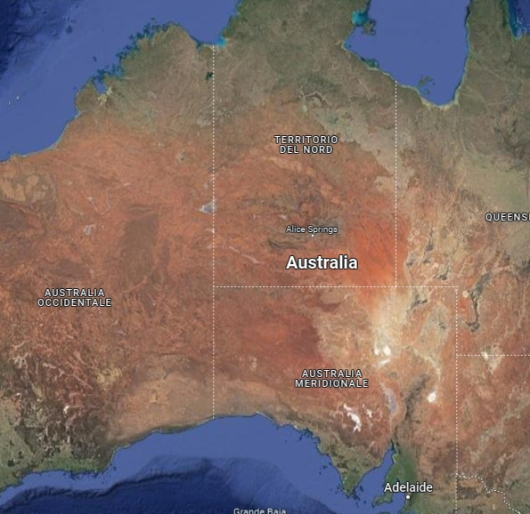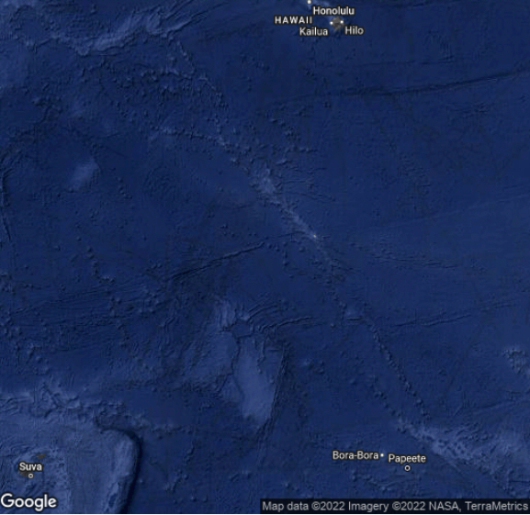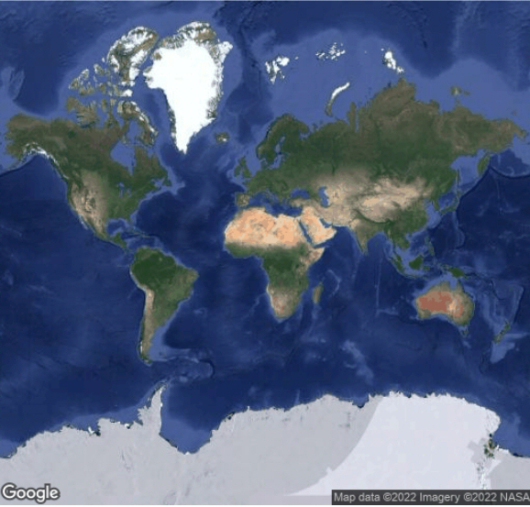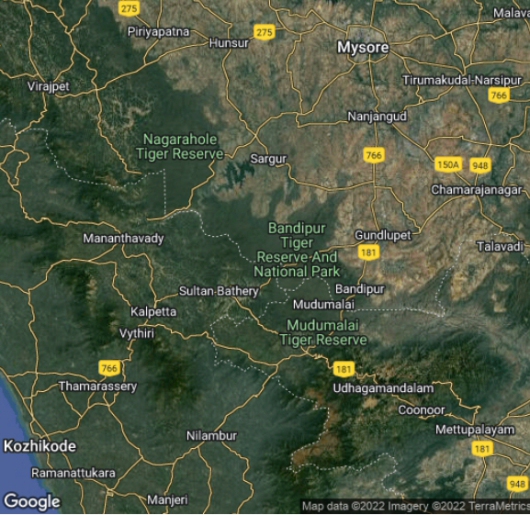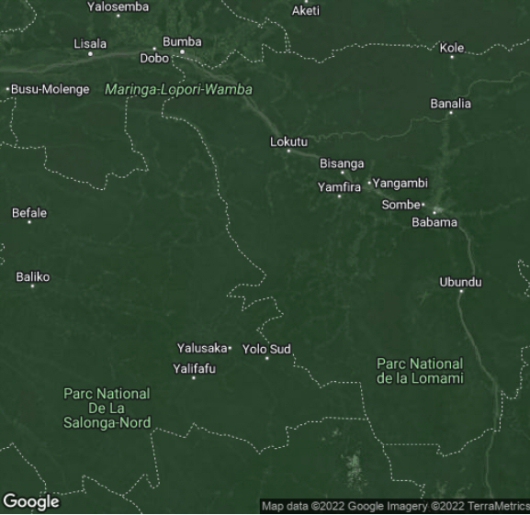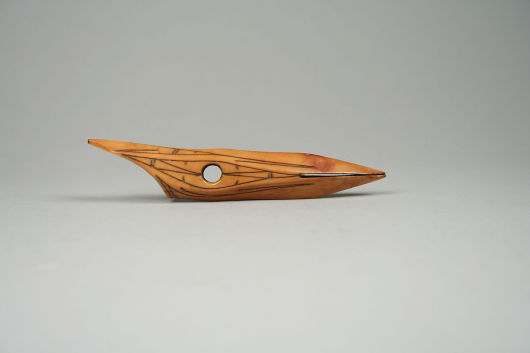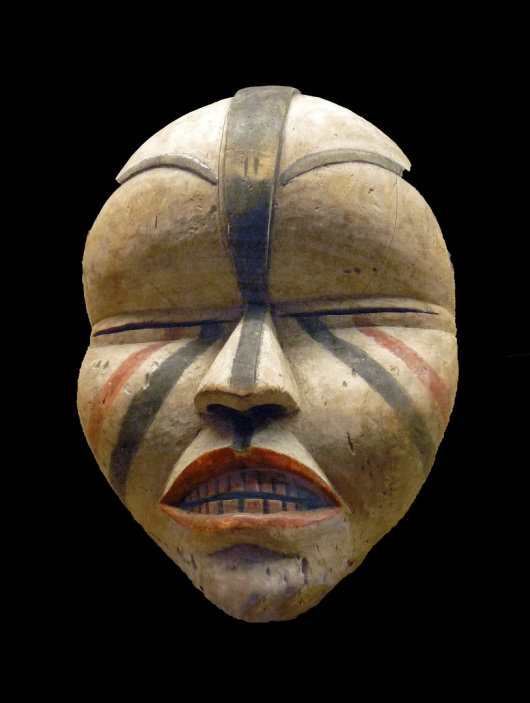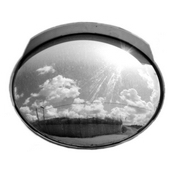Gardens 11
NATURE AND
NATIONAL PARKS
In the Blue Planet the natural areas and national parks, by the different nations, are fortunately innumerable, but never enough.
Impossible to mention them all on a little web page. Primary forests, oceans, deserts, glaciers: all have their own essential function. These are our living memory of "Garden of Eden". They are still here, they have never missing. We haven't yet reduced the planet to a single dump. There is still the possibility of healing, only one: back on the high road of mother nature. That is the final truth: the centrality of life in the universe.
The Primary Forest
and Tundra of Russia
The most vaste natural area of the world in mainland: it is the largest natural area in the world biosphere, second in extension only to the oceans. The Russian Federation.
The Saharian and
Arabian Deserts
The most vaste desertic area of the world. North Africa and Arabian Peninsula. From Mauritania to Oman.
The Amazon Basin
The Basin of Amazon River, South America. Brazil, Venezuela, Colombia, Peru, etc.
"The Bush",
The Australian Outback
The entire semi-arid continent of Australia. The Commonwealth of Australia.
The Great Barrier Reef
The Great Barrier Reef of Australia. The Commonwealth of Australia.
... Etc.
From the Hawai-U.S.A. to French Polynesia-France Republic.
... Etc.
Japan.
... Etc.
Entire World.
North America
United States of America.
Greenland
Kingdom of Denmark.
Southern India
Republic of India
Rift Valley, Africa
Kenya, etc.
Central Africa,
Congo's
Primary Forest
Democratic Republic of the Congo.
Three different Eskimo's Harpoon Heads, 11th-12th century, geographic origin: Punuk Islands, Alaska, U.S.A.; from The Michael C. Rockefeller Wing Collection, THE MET, The Metropolitan Museum of Art, New York, U.S.A. Source: THE MET, Website: metmuseum.org.
BOOKS
Diana Craig Patch and Alisa LaGamma: "The African Origin of Civilisation: The Metropolitan Museum of Art Bulletin, v.79, no. 4 (Spring, 2022)", 52 pages, MetPublications (also on line), THE MET - The Metropolitan Museum of Art, 2022, NYC, NY, U.S.A. Language: English.
This Bulletin highlights five millennia of extraordinary artistic production on the African continent. Twenty-one pairings unite masterpieces from the Museum’s collections of ancient Egyptian and West and Central African art to reveal unexpected parallels and contrasts across time and cultures. The title pays special homage to Senegalese scholar and humanist Cheikh Anta Diop, whose book The African Origin of Civilization: Myth or Reality (1974) challenged prevailing attitudes and advocated for recentering Africa as the source of humanity’s common ancestors and many widespread cultural practices. Building on Diop’s premise, this volume allows readers to delve into the rich histories and diverse artistic traditions from the cradle of human creativity.
Available also on line: THE MET, MetPublications.
THE MET Editor - The Metropolitan Museum of New York, New York City, NY, United States of America: "The MET Collection" On Line, 2022. Language: English.
Explore more than 490,000 works from around the world and troughout history:
Various authors: "Le guide du Musée", 308 pages, Musée du quai Branly - Jacques Chirac - Musée des Arts et civilisation d'Afrique, d'Asie, d'Océanie et d'Amerique, 2006, Paris. Language: French / Etc.
Very fine. The collections:
National Museum of African Art Editor: "Selected Works from the Collection of the National Museum of African Art, Volume 1, 191 pages, Smithsonian National Museum of African Art, 1999, Washington, D.C., U.S.A. Language: English.
The National Museum of African Art began as a private educational institution in 1964 and became part of the Smithsonian Institution in 1979. This volume includes highlights from the museum's holdings of traditional African art from throughout the continent, although the majority of works originated in sub-Saharan Africa. The 150 objects presented include sculpted masks and figures, regalia, items of personal adornment, textiles, furniture, and household objects. Each entry provides a discussion about the object's meaning and use and includes provenance and publication history. Fully illustrated in color, the handbook also includes maps, an extensive bibliography, and an introduction by Roy Sieber, America's foremost authority on traditional African art.
Christa Clarke: "African Art in the Barnes Foundation: The Triumph of L'Art nègre and The Harlem Renaissance", 296 pages, Skira Rizzoli, 2015. Language: English.
The first publication of the Barnes Foundation’s important and extensive African art collection. The Barnes Foundation is renowned for its astonishing collection of Postimpressionist and early Modern art assembled by Albert C. Barnes, a Philadelphia pharmaceutical entrepreneur. Less known is the pioneering collection of African sculpture that Barnes acquired between 1922 and 1924, mainly from Paul Guillaume, the Paris-based dealer. The Barnes Foundation was one of the first permanent installations in the United States to present objects from Africa as fine art. Indeed, the African collection is central to understanding Barnes’s socially progressive vision for his foundation. This comprehensive volume showcases all 123 objects, including reliquary figures, masks, and utensils, most of which originated in France’s African colonies—Mali, Côte d’Ivoire, Gabon, and the Congo—as well as in Sierra Leone, Republic of Benin, and Nigeria. Christa Clarke considers the significance of the collection and Barnes’s role in the Harlem Renaissance and in fostering broader appreciation of African art in the twentieth century. In-depth catalog entries by noted scholars in the field complete the volume.
A Woyo mask in the Royal Museum for Central Africa, Belgium.
Source: Wikipedia. Web site: www.wikipedia.org.
Warren Robbins: "African Sculpture", 240 pages, Shiffer Publisher Ltd., 2005. Language: English.
A comprehensive introduction to the vast range of tribal sculpture from Africa is presented in this photographic survey. Ashanti fertility dolls, Bambara dance headpieces, Bachokwe staff heads, and Bakuba boxes are included in 347 works from Senegal to the Congo regions, Mali to Sierra Leone. This book provides a tremendous opportunity for Africans and non-Africans alike to view the diversity, expressive quality, and sheer evocative power of African art, and to gain a better understanding of one of the great heritages of mankind. Warren Robbins presents the pieces from the perspective of two civilizations - Africa and the West. Believing that the works are classical rather than primitive art, his sensitive analysis of the stylistic refinements of the various tribes past and present emphasizes the importance of preserving this art for posterity. The text and captions are presented in both English and French.
Warren M. Robbins and Nancy Ingram Nooter: "African Art in American Collections", 616 pages, Shiffer Publisher Ltd., 2004. Language: English.
African art - with its powerful forms, complex symbolism, and formal inventiveness - has only recently come to be recognized as one of the great artistic traditions of mankind. This rich tradition is showcased here in a remarkable selection of outstanding works. Nearly 1,600 objects are illustrated, each accompanied by scholarly information on style, usage, meaning, and cultural origin. Featured individually by section are the styles of Western Sudan, the West African Coastal Region, West Central Africa, Central Africa, and Eastern and Southern Africa. A thought-provoking introduction helps readers understand the significance of African art as a form of human creative expression, its relationships to contemporary Western art, and the controversies surrounding it in the world's museums. Newcomers to the field as well as professionals will find many questions answered in the text and captions. This comprehensive survey of some 230 styles of African art is an essential reference for scholars, teachers, students, curators, collectors, and dealers.
"African people at work".
Source: Wikipedia. Web site: wikipedia.org.
Jean-Baptiste Bacquart: "The Tribal Arts of Africa", 240 pages, Thames & Hudson, 2002. Language: English.
The marvelous achievements of black African artists over thousands of years are revealed and superbly portrayed in this book. The earliest pieces date from the beginning of the first millennium, the most recent from the early twentieth century before the commercial production of art for the tourist trade. All were made by Africans for their own use. Jean-Baptiste Bacquart has divided Africa south of the Sahara into forty-nine cultural areas. Each section studies the most important tribe within that area, surveying its social and political structures as well as its artistic production. The art is analyzed according to type in most instances masks, statues, and everyday objects such as utensils, furniture, and jewelry. When appropriate, further information on artistically related tribes is provided. Each section contains lavishly presented color photographs of all the major object types, documentary black-and-white illustrations, and its own bibliography. A detailed reference section with information on key collections open to the public and a glossary completes this invaluable publication, the only one to present the entire range of black African art in accessible form. 865 illustrations and photographs, 195 in color.
Francois Neyt, Kevin Dumouchelle, Allen F. Roberts, and Woods Davy: "Kifwebe: A Century of Songye and Luba Masks", 368 pages, 5 Continents Editions, 2020. Language: English.
Offers a fresh perspective on the Songye and Luba through the study of the Woods Davy Collection. Kifwebe masks are ceremonial objects used by the Songye and Luba societies (Democratic Republic of Congo), where they are worn with costumes consisting of a long robe and a long beard made of plant fibers. As in other central African cultures, the same mask can be used in either magical and religious or festive ceremonies. In order to understand Kifwebe masks, it is essential to consider them within the cosmogony of the python rainbow, metalworking in the forge, and other plant and animal signs.
Among the Songye, benevolent female masks reveal what is hidden and balance white and red energy associated with two subsequent initiations, the bukishi. Aggressive male masks were originally involved in social control and had a kind of policing role, carried out in accordance with the instructions of village elders. These two male and female forces acted in a balanced way to reinforce harmony within the village. Among the Luba, the masked figures are also benevolent and appear at the new moon, their role being to enhance fertility.
Although the male and female masks fulfil functions that do not wholly overlap, they do have features in common: a frontal crest, round and excessively protruding eyes, flaring nostrils, a cube-shaped mouth and lips, stripes, and colors.
Art historians and anthropologists have taken increasing interest in Kifwebe masks in recent years.
Mary Roberts and Allen F. Roberts: "Luba: Visions of Africa", 152 pages, Five Continets editions, 2007. Language: English.
This image-filled book features outstanding works of Luba art from the Democratic Republic of Congo. Major themes to be addressed include the role of visual and performance arts in Luba traditional politics; the symbolism of the female image and why 'the king is a woman' for Luba; the instrumentality of royal insignia in politics, problem-solving, and healing; and the use of art objects in the creation and transmission of historical knowledge in both the Luba heartland and its peripheries. Case studies from the authors' long research among Luba, Tabwa, and related peoples of the Congo will illuminate the complex philosophical underpinnings of Luba thought and visual expression.
Museum Rietberg Editor: "African Masters: Art from the Ivory Coast", 240 pages, Scheidegger and Spiess, 2015. Language: English.
West Africa has a rich artistic tradition, with artists whose work rivals the great masters of European art. Yet the assumption still prevails that traditional African art is the product of “tribal workshops”, guided by neither genuine aesthetic principles nor independent artistic sensibilities.
African Masters corrects this oversight with a comprehensive overview of the most significant sculptors from the Ivory Coast and neighboring countries, including works by artists from among the Guro, Senufo, Dan, Baule, and Lobi. Works from ancient masters are juxtaposed with those of important contemporary artists and essays by renowned scholars who investigate the role of artists in traditional and modern societies, their ideals of beauty and its transformation into works of art.
Featuring more than two hundred full-color masterpieces from public and private collections - including many never before published - the book marks a milestone in research on West African art.
Z. S. Strother: "Pende: Visions of Africa ", 128 pages, Five Continents Editions, 2007. Language: English.
Although many societies in the Congo were once renowned for vibrant masquerades and architectural sculpture, these phenomena have only been studied as living traditions among a handful of peoples, most notably the Pende. Building on the extended fieldwork of numerous researchers since the 1950s, this text offers a unique window into the dynamic performance contexts of both masquerade and architecture in Central Africa. As much as possible, it privileges Pende voices as it seeks to understand the interrelationship between ritual practice and aesthetic form. Attentive to history, the text also records how these artistic practices have responded (sometimes unpredictably) to both colonial and post-colonial pressures. Lavish illustrations feature both iconic and hitherto unpublished masterworks, which have been selected to evoke the full range of Pende expression. Visions of Africa is a series devoted to the arts of Africa grouped according to the different populations.
Marie Yvonne Curtis: "Baga : Visions of Africa", 148 pages, Five Continents, 2019. Language: English.
The Baga, along with the Nalu and the Landuma, are a small rice-growing community living along the coast of Guinea, in West Africa. They became famous following the discovery of their extraordinary sculptures by explorers, colonial administrators, ethnologists, collectors, and art dealers towards the end of the nineteenth century. Nowadays, the art of the Baga is admired in the public and private collections of northern European countries.
Their works consist mainly of different types of wooden masks and statues of various sizes, as well as wonderful percussion instruments, chiefs' seats, and other skillfully carved utilitarian objects. All these sacred objects were once created and used as important features in their ritual behavior based on the manifestation of their divinities, ancestor worship, rites of passage, secret brotherhoods, and the performance of important social ceremonies like weddings, funerals, and harvesting.
But more recently they have also included entirely new sculpted works created by talented, highly skilled craftsmen who were influenced by colonization and newly introduced religions, while at the same time finding inspiration in traditional myths and legends. Fascinating examples of this eclecticism are the figures of colonists depicted standing, on horseback, or riding birds, the many different kinds of female busts representing Mami Wata, the sea goddess, winged figures, bestiaries associated with tales and legends, and the personifications of the heroic founders of their villages.
To this day, the young men of the Baga continue to make certain commemorative and emblematic objects, such as the large D'mba mask, and still produce sculptures connected with their history and culture. All these artefacts have their place in the dances and events that play such an important part in village life and in relations between villages and beyond.
Ngil Mask, River Mbini (Rio Muni), Central Africa, in wood and kaolin; Fang or Makina (Oseba) people, 19th century. Ethnological Museum Berlin.
Source: Wikipedia. Web site: wikipedia.org.
Constantine Petridis Editor, Cecile Fromont Contributor: "Fragments of Invisible: The René and Odette Delenne Collection of Congo Sculpture", 120 pages, 5 Continents Editions, 2013. Language: English.
Fragments of the Invisible celebrates the acquisition by the Cleveland Museum of Art in 2010 of 35 stellar works of 19th- and 20th-century Congolese art from the collection of René and Odette Delenne of Brussels. The book, which accompanies an exhibition at the museum, explores the fragmentary nature of African works in Western collections and sheds light on how, in their original settings, many works connected with the invisible world of spirits and deities. Many of the objects have never been published or exhibited before.
François Neyt, and Huges Dubois: “Sculptures et forme d’Afrique”, "African Sculptures and Forms", 312 pages, 5 Continents Editions, 2019. Language: French, English.
At the turn of the twentieth century, in particular Gauguin, Picasso, Matisse, and later the Surrealists, then others right up till the present day, Western artists have drawn on the arts of Africa for inspiration. How can this constant impact ever be measured? The same is true for the arts in Africa. Every sculpture carries within it the heritage of a people, culture, and artistic tradition in the originality of its forms. West Africa, Central Africa, and East Africa each has its own set of characteristics, within which the variety of the sculptures - always similar yet also always different - demonstrates the creativity of the ethnic group that created it. This book presents a remarkable collection amassed by a knowledgeable and impassioned art lover that combines sensitivity with quality - a quality of forms meticulously selected among different African cultures. It includes masks and reliquaries carved in Gabon, effigies and statuettes from Congo-Brazzaville and Congo-Kinshasa, and astonishing objects from West Africa, from Mali to Cameroon, the Koro and Mossi peoples, the Ejagham and Ekoi in Nigeria, and the Gouro in the Ivory Coast. An extraordinary collection of artistic forms that well merits its place in the universal patrimony of art.
Hughes Dubois Photographer, Francois Neyt Contributor: "African Masks: The Barbier Mueller Collection", 288 pages, Prestel, 2010. Language: English.
The book includes one hundred colour plates accompanied by in-depth descriptions, as well as numerous black-and-white photographs of the masks as they are used in religious and secular ceremonies. An introductory text by renowned scholars describes how the masks are made, examines their significance in African culture and offers insight into the universal practice of masquerading. A unique contribution to the literature on African art, this book is also a wonderful introduction to countless fascinating, age-old spiritual traditions still practised today.
Ezio Bassani: "African Art", 380 pages, Skira, 2012. Language: English.
An illustrated study of traditional and figurative art of Africa that reflects the continent’s rich artistic and cultural heritage. African Art explores the continent’s marvelous artistic achievements which share its roots with humanities origins. Sculpture has historically been the chief means of artistic expression. The human figure, whether real or symbolic, is almost the exclusive subject of African art. This vast world of African sculpture is the result of an evolutionary process, based on humanity’s rich history and diversity deriving from migrations, wars, and alliances. During the last century, the African continent has experienced radical transformations in the fields of social and political organizations, the economy and religions. Inevitably, new artistic forms are being established simultaneously with the globalization process and the creation of works for the art market, which retain less and less ties with those of the past. African Art is an exhaustive presentation of the traditional figurative arts of Africa and concisely explains their distinguishing historical, formal, symbolic and functional characteristics. A truly valuable source of inspiration for students, collectors, and travelers alike, this book is complete with a glossary and bibliography.
Ezio Bassani: "Power of Form: African Art from the Horstmann Collection", 288 pages, Skira Publisher, 2002. Language: English.
Many elements converge in the construction of a high-quality art collection, making it a fascinating, intellectual and emotional adventure, a journey of discovery and a labor of love. Formed over the course of thirty years by Udo Horstmann and his wife, the Horstmann collection is rather exceptional inasmuch as it offers a captivating vision of the variety of solutions adopted by black artists over the course of the centuries: nearly 120 extraordinary sculptures, figures, masks, household objects and weapons from Guinea-Bissau, Mali, Burkina Faso, Côte d'Ivoire, Ghana, Togo, Nigeria, Cameroon, Gabon, Congo, Angola, Zambia, Zimbabwe, South Africa, Swaziland, Mozambique, Kenya and Sudan.
The origin of the artworks-- selected for their perfection transcending the mere utilitarian function-- touches all of the lands of the continent, including the southern and eastern lands rarely so authoritatively represented in other collections, and their execution covers an arc of time of several millennia.
The presence of ancient works contributes to the demolition of the preconception that has weighed unfairly until recent years on African art, and that is the absence of evolution in the artistic creation of Black Africa, and therefore of any historic quality. This is a difficult negation to cancel if African sculpture is still often labeled as "primitive."
Another meritorious quality of the Horstmanns lies in the fact that they chose the sculptures in their collection, not out of any generic passion for the exotic and neither for any abstract demand for representability of ethnicity or significance or destination, but for their quality, for the enchantment of the "form," or better, of the "forms."
Paging through the book, the reader will discover that the artistic creation, that is, the need to give "form" to the formless, is a common heritage of mankind, shared by the artists of Black Africa.
Jan Strybol: "Art and the Sacred in Mumuyeland", 144 pages, Kunst Stichtin Boek, 2018. Language: English.
Despite some field research our knowledge of the sacred among the Mumuye is still embryonic. In all these acephalic groups of a binary and antinomic nature, the complex constitutes an extremely varied semantic field in which certain aspects are accentuated depending on the circumstances. Religious power is linked to the strength contained in sacred objects, of which only the elders are the guardians. Moreover, this gerontocracy relies on a system of initiatory stages which one must pass to have access to the status of 'religious leader'. Geographically isolated, the Mumuye were able to resist the attacks of the Muslim invaders, the British colonial authority and the activities of the different Christian missions for a long time. As a result, the Mumuye practised woodcarving until the beginning of our century.
In 1970 Philip Fry published his essay on the statuary of the Mumuye of which the analysis of the endogenous network has so far lost nothing of its value. Basing himself on in situ observations, Jan Strybol attempted to analyze the exogenous network of this woodcarving. Thus he was able to document about forty figures and some masks and additionally to identify more than twenty-five Mumuye artists as well as a specific type of sculpture as being confined to the Mumuye Kpugbong group. During and after the Biafran war, hundreds of Mumuye sculptures were collected. Based on information gathered between 1970 and 1993 the author has demonstrated that a certain number of these works are not Mumuye but must be attributed to relic groups scattered in Mumuye territory.
Christina Hellmich Editor, Manuel Jordan Editor and Contributor, Robert A. Kato Photographer: "Embodiments: Masterworks of African Figurative Sculpture", 304 pages, Prestel, 2014. Language: English.
This volume, on a unique and wide-ranging collection of figural sculptures from sub-Saharan Africa, examines not only each distinctive piece, but also how these works of art express value systems and cultural relationships both inside and outside Africa. The Richard H. Scheller Collection, presented in this book and on display at the de Young in San Francisco, offers a diverse portrait of sub-Saharan African sculpture. More than 100 distinct ethnic groups from more than 20 present-day countries are represented by works of art spanning several centuries and encompassing a broad array of styles. These objects represent ancestors, express community values, and serve religious and ceremonial purposes. Beautifully photographed in natural light, the sculptures range in style from classic and iconic to rare and unusual. The geographical breadth of the collection and the variations in the depictions will allow readers to explore both the histories and formal qualities of the genre. Texts by leading scholars enhance the understanding of 122 objects, alongside essays on major sculptures and themes. Writings on the scientific testing of pieces and the process of photographing the works round out this volume that expands our understanding of African figurative art.
Vincent Girier-Dufournier, Heinrich Schweizer, Berenice Geoffroy-Schneiter: "Intimate Conversations: African Miniatures", 336 pages, 5 Continents Editions, 2019. Language: English.
The Dintenfass Collection serves as a model and a source of inspiration for new and seasoned collectors alike. A different slant on collecting which is not actually just buying from dealers. A lavishly illustrated book that traces the origin of a collector's interest in African art and analyzes the psychological aspects driving the passions for collecting.
The Nicole and John Dintenfass Collection is well known and based on aesthetics, and the works have been reproduced in many publications. They have collected with passion, diligence, depth and rigor monumental sculptures and wooden miniatures, from most regions of Africa. Focusing on pieces of the highest artistic quality, this book shares the collectors' personal point of view about collecting and offers to readers anecdotes that provide an additional insight into this world to future and present collectors in their search for African art. Collecting is a passion that often leads to intimate inner conversations or to emotional experiences with the objects themselves. Moreover many collectors share their unique experience of joy and appreciation with twentieth-century artists who also collected African art and who generously imparted advice, suggestions and support in responding to the collectors' enthusiasm.
Thanks to the multiple beautiful and sensitive photographs of each object, the viewer has a chance to form an intimate conversation that creates a connection with those African master carvers that have strongly influenced modern realism, cubism and expressionism.
Peter Breunig: "NOK: African Sculpture in Archaeological Context", 304 pages, Africa Magna Verlag, 2014. Language: English.
This book provides insights into the archaeological context of the Nok Culture in Nigeria (West Africa). It was first published in German accompanying the same-titled exhibition “Nok - Ein Ursprung afrikanischer Skulptur at the Liebieghaus Skulpturensammlung in Frankfurt” (30th October 2013 - 23rd March 2014) and has now been translated into English. A team of archaeologists from the Goethe University Frankfurt/Main has been researching the Nok Culture since 2005. The results are now presented to the public. The Nok Culture existed for about 1500 years - from around the mid-second millennium BCE to the turn of the Common Era. It is mainly known by the elaborate terracotta sculptures which were likewise the focus of the exhibition. The research of the archaeologists from Frankfurt, however, not only concerns the terracotta figures. They investigate the Nok Culture from a holistic perspective and put it into the larger context of the search for universal developments in the history of mankind. Such a development - important because it initiated a new era of the past - is the transition from small groups of hunters and gatherers to large communities with complex forms of human co-existence. This process took place almost everywhere in the world in the last 10,000 years, although in very different ways. The Nok Culture represents an African variant of that process. It belongs to a group of archaeological cultures or human groups, who in part subsisted on the crops they were growing and lived in mostly small but permanent settlements in the savanna regions south of the Sahara from the second millennium BCE onwards. The discovery of metallurgy is the next turning point in the development of the first farming cultures. In Africa the first metal used was not copper or bronze as in the Near East and Europe, but iron. The people of the Nok Culture were among the first that produced iron south of the Sahara. This happened in the first millennium BCE - about 1000 years after the agricultural beginning. While iron metallurgy spread rapidly across sub-Saharan Africa, the terracotta sculptures remained a cultural monopoly of the Nok Culture. Nothing comparable existed in Africa outside of Ancient Egypt and the Mediterranean coast. The oldest, securely dated clay figures date back to the early first millennium BCE. Currently, it seems as if they appeared in the Nok Culture before iron metallurgy, reaching their peak in the following centuries. At the end of the first millennium BCE they disappeared from the scene. There is hardly any doubt about the ritual character of the Nok sculptures. Yet, central questions remain unanswered: Why did such an apparently complex world of ritual practices develop in an early farming culture just before or at the beginning of the momentous invention of iron production? Why were the elaborate sculptures - as excavations show - intentionally destroyed? And why did they disappear as suddenly as they emerged?
Herbert H. Cole: "Maternity: Mothers and Children in the Arts of Africa", 376 pages, Mercatorfonds, 2017. Language: English.
On the African continent, images of mothers and children are found wherever the visual arts are, from early rock-art sites in Egypt and the Sahara to the contemporary arts of South Africa. Discovered in a variety of materials, from stone, ivory, and metals to beadwork, wood, and even paintings, images of maternity enliven virtually every type of object made in the region.
Defining maternity as a biological and cultural phenomenon, the author goes beyond obvious notions of fertility to consider the importance of maternity in thought, ritual action, and worldview. Maternity images of all eras evoke deep and significant messages – well beyond what meets the eye.
Boris Wastiau: "Medusa: The African Sculpture of Enchantment", 256 pages, 5 Continents, 2009. Language: English.
Just as the mythological Greek figure Medusa possessed the extraordinary power of turning onlookers into stone, the stunning African artifacts, masks, and statues showcased in this fascinating book were all created to cast spells on people. The function of these objects was not merely to symbolize a person or thing, but to incarnate a magical power that could act on people and the world during religious and medicinal rituals.
Mysterious and exceptionally crafted, these masks and sculptures are deciphered by African art specialist Boris Wastiau, who examines their symbolism and ritual usage, and explores the connection between the material and spiritual. Against a backdrop of allegories are more than 100 beautifully photographed works from the Museum of Ethnography in Geneva; Medusa is a comprehensive and accessible introduction to African art.
Alisa LaGamma: "Kongo: Power and Majesty", 308 pages, The Metropolitan Museum of Art, Yale University Press, U.S.A., 2015. Language: English.
Artists from the kingdom of Kongo - a vast swath of Central Africa that today encompasses the Republic of Congo, the Democratic Republic of Congo, and Angola - were responsible for outstanding creative achievements. With the influx of Portuguese, Dutch, and Italian merchants, missionaries, and explorers, Kongo developed a unique artistic tradition that blended European iconography with powerful indigenous art forms. An initially positive engagement with Europe in the 15th century turned turbulent in the wake of later displacement, civil war, and the slave trade—and many of the artworks created in Kongo reflect the changing times.
This comprehensive study is the first major catalogue to explore Kongo’s history, art forms, and cultural identity before, during, and after contact with Europe. Objects range from 15th-century “mother-and-child” figures, which reflect a time when Europeans and their Christian motifs were viewed favorably, to fearsome mangaaka, power figures that conveyed strength in the midst of the kingdom’s dissolution. Lavishly illustrated with new photography and multiple views of three-dimensional works, this book presents the fascinatingly complex artistic legacy of one of Africa’s most storied kingdoms.
Louis Perrois: "Kota: Visions of Africa", 168 pages, Five Continents, 2019. Language: English.
This new title in the Visions of Africa series offers a deep insight into the art of the Kota people of Gabon in the coastal area of western equatorial Africa. The Kota have developed an astonishing creativity in their representations of their ancestors. Their dreamlike figures combine a sharp sense of stylized reality tending towards abstraction with an extraordinary and imaginative use of copper, tin, and iron for purposes of decoration. But what seems to have been just a matter of aesthetic 'taste' has in fact a symbolic function, as most of the decorative motifs and the choice of the technique are linked to the Kota's kinship system or religious beliefs. The same applies to the use of copper, which was a rare material and consequently a mark of wealth and power in their society. The mbulu-ngulu reliquary figure was an icon, the visual sign of a world in which the ancestors continued to watch over their descendants. In Kota lands it was an essential 'tool' in group survival, one that enabled a continuous communication to be established between the living and the dead. The reliquary figures and initiation masks of the Kota and Mbete served as aides-mémoire and instruments useful in arousing the forces of the netherworld among the Gabonese and Congolese in times past. Together with the Fang byeri and other nkisi punu, in their various forms they have gradually become the time-honored emblems of the culture and ancestral values of the peoples of the great African equatorial forest.
Susan Elizabeth Gagliardi: "Senufo Unbound: Dynamics of Art and Identity in West Africa", 288 pages, Five Continents Editions, 2019. Language: English.
Joining historical analysis with eye-catching sculptures, this book offers expanded views of a dynamic region's arts and identities, spanning the borders of present-day Burkina Faso, Côte d'Ivoire, and Mali.
New York's now defunct Museum of Primitive Art (MPA) opened its landmark exhibition Senufo Sculpture from West Africa in February 1963. Under the directorship of modernist art historian Robert Goldwater, the MPA displayed together for the first time ever a stunning array of arts attributed to Senufo artists, patrons, and audiences. Exaggerated yet delicate face masks, composite yet integrated zoomorphic helmet masks, and geometric yet gentle figurative sculptures exemplify the MPA's vision of the Senufo style. In the book accompanying the exhibition, Goldwater described a cultural context for Senufo communities in a region spanning the borders of present-day Burkina Faso, Côte d'Ivoire, and Mali. More than fifty years later, Gagliardi's Senufo Unbound draws on archival, museum, and field-based data, including previously unpublished letters, photographs, and objects, to look back at the MPA's tour de force.
Senufo Unbound investigates the making of Senufoness since the late nineteenth century, when the French government seized cities and captured political rivals as part of its colonization efforts in the region. The book explores a mid-twentieth-century convergence of Catholic missionaries, an art dealer, and an iconoclastic movement in northern Côte d'Ivoire which led to an exodus of iconic objects from Africa to Europe and North America. It examines the presence and absence in communities identified as Senufo, of poro, a great patron for the arts and an institution at the core of certain constructions of Senufo identity.
Constantine Petridis: "Luluwa: Central African Art between Heaven and Earth", 240 pages, Mercatorfonds, 2018. Language: English.
Living in the region between the Lubudi and Kasai rivers in south central Democratic Republic of the Congo, the Luluwa people are known for their elaborately carved male and female figure sculptures, masks, and decorative arts. Constantine Petridis draws on first-hand accounts of numerous explorers, missionaries, colonial servants, anthropologists, and art historians who visited the region between the 1880s and the 1970s, to comprehensively situate the Luluwa’s ornate art in its original environment of production and use. Through a close study of published and unpublished sources as well as museum objects and archival photographs, this book sheds new light on the historical context of one of central Africa’s most spectacular artistic legacies, whose creation presumably dates back to the second half of the 19th century.
Constantine Petridis, Yaelle Biro, Herbert M Cole: "The Language of Beauty in African Art", 356 pages, Art Institute of Chicago, 2022. Language: English.
This ambitious publication centers indigenous perspectives on traditional artworks from Africa by focusing on the judgments and vocabularies of members of the communities who created and used them. It explores cross-cultural affinities spanning the African continent while respecting local contexts; it also documents an exhibition that is extraordinary in scope and scale. The project’s overriding goal is to reconsider Western evaluations of these arts in both aesthetic and financial terms. The volume features nearly 300 works from collections around the world and from the important holdings of the Art Institute of Chicago. Although it emphasizes the sculptural legacy of sub-Saharan cultures from West and Central Africa, it also includes examples of artistic traditions associated with eastern and southern Africa as well as textiles and objects designed for domestic, ritual, and decorative functions.
Susan Kloman: "Beauty Unusual: Masterworks from the Ceil Pulitzer Collection of African Art", 196 pages, 5 Continents Editions, 2021. Language: English.
Collects the best works from the Ceil Pulitzer Collection of African Art, put together over more than 30 years, “As an artist, I look for beauty in things, and appreciate the unusual.” - Ceil Pulitzer Ceil Pulitzer started her journey as a collector of African art more than 30 years ago. Her artistic spirit has drawn her to all forms of culture and human expression. As a dedicated painter, she has relentlessly exercised her eye in the study of art and art history. As a collector of modern art first, she understood that African art shaped the trajectory of 20th-century art. Later, in Paris, she met the venerable expert and legendary dealer of African art, Charles Ratton. In one brief meeting, he said to her: “You have a good eye.” This encounter distilled her passion and pursuit of excellence in classical African art. The Ceil and Michael Pulitzer Foundation has developed and supported a number of philanthropic endeavors in Africa, and in major institutions that promote the art of Africa and humanitarian efforts there.
Alain-Michel Boyer: "Visions of Africa: We", 132 pages, 5 Continents Editions, 2020. Language: English.
Exploring the masks of an African culture that were one of Picasso's primary influences
The We, whose name means 'men who easily forgive', live in the forests along the western border of the Ivory Coast. Theirs is regarded as a mask culture, as opposed to other societies that have none (such as the Ashanti in Ghana).
The bold, striking sculpture on these masks ensured they would be among the first examples of African art to captivate Cubist artists in the West. These eye-opening, exuberant, phantasmagorical masks are astonishingly diverse and display a dazzling compositional inventiveness. They clearly also influenced the art of neighboring peoples, to the extent that, far from being isolated in a remote corner of the jungle, this art has been identified as the keystone, the pivot around which all the art of the area revolves giving the lie to the notion that the lines drawn on maps by colonizers have any effect on the process of artistic creation. To which should be added a further crucial point: it is no exaggeration to speak of a mask culture, so abundant are they in each village, with a part to play in all community activities (legal, mystical, agricultural) and a role in all the stages of life. The nature of this dynamic, mobile art is completely different from the art of other peoples, where form suggests meaning and reveals the impact and the type of ceremony it is associated with; in the case of the We masks, form is never an indicator of category.
Anne-Marie Bouttiaux: "Visions of Africa: Guro", 152 pages, 5 Continents Editions, 2019. Language: English.
Art lovers well know the works of the different groups of peoples generally referred to as 'Guro' who live in the center of the Ivory Coast. Close to the Wan, Baule, Yaure, and Bete, the Guro have maintained close contacts with their neighbors, and reciprocal influences are apparent in their various artistic creations. Masks have a particular importance that goes well beyond the value attributed to them for their aesthetic qualities on the art market. These objects might even be considered emblematic, having till now allowed those who have defined themselves as Guro to lay claim to this identity. Whereas the French colonization largely weakened the prestige of those men whose power resulted from their hunting and war activities, the continuation of complex rituals that entailed the use of masks allowed the men to preserve a form of political and religious control. By diversifying the categories of masks between, on one hand, those that receive blood sacrifices to honor spiritual entities, and those, on the other hand, made more for entertainments given at funerals, political demonstrations, and tourist events, the Guro have reinvented, regalvanized, and readapted perfectly integrated rituals to a contemporary society in permanent change.
Judith Miller: "The Language of Beauty in African Art: The essential world guide", 240 pages, DK Adult, 2006. Language: English.
Encompassing more than one thousand individually priced items from around the world, a comprehensive overview of art from a broad spectrum of tribes and cultural groups includes historical, cultural, spiritual and ritual, and price information on works from Africa, Oceania, and the Americas, along with maps that pinpoint tribal locations.
Judith Miller: "Tribal Art", 240 pages, DK Adult, 2006. Language: English.
Encompassing more than one thousand individually priced items from around the world, a comprehensive overview of art from a broad spectrum of tribes and cultural groups includes historical, cultural, spiritual and ritual, and price information on works from Africa, Oceania, and the Americas, along with maps that pinpoint tribal locations.
Christine Vallouet: "Collectors’ Visions : Arts of Africa, Oceania, Southeast Asia and the Americas", 288 pages, 5 Continents Editions, 2019. Language: English.
At the beginning of the twentieth century, at a time of turmoil when art was undergoing unprecedented upheaval, the West, and especially France, began to turn its eyes towards distant cultures until then largely neglected. Artists were in the throes of questioning all canons and were seduced by the freshness they found in the art of these cultures. The outcome is what we know today as 'Primitivism'. But at the same time, through a sort of aesthetic empathy, art lovers, critics, poets, and dealers developed a passion for the intrinsic beauty of these objects, which began to arrive in Europe in large numbers, brought home by colonial administrators, missionaries, or officers on overseas postings. The extraordinary expressiveness and at the same time great harmoniousness of the best of these works enchanted them. Guillaume Apollinaire was not afraid to talk of 'the very principles of great art' when discussing African art.
This book acknowledges this art's role in world art and looks at the way beauty was perceived through the 'eye' of great art lovers. Some of these are mentioned in this publication, which discusses the works they painstakingly amassed. Many of these works are now famous and indeed have come to be regarded as 'icons'. Others of the greatest artistic importance collected by these aficionados are reproduced here, highlighting the particular genius of peoples, the existence of which is testified only through their sculpture. Many of these have never, or in some cases only very seldom, been published.
The art of Africa, Oceania, America, and Southeast Asia are all represented, revealing the extraordinary variety of artistic forms developed in these four regions of the world. Certain cultures were discovered and appreciated in the West in the early twentieth century, while others were brought to the attention of the international community in the 1950s. This book tells the story of how discoverers, collectors, and dealers brought tribal art to France over a period of some eighty years. This is the first time a full survey has been attempted, especially as regards the post-war period, and many of the protagonists in this enthralling adventure are virtually forgotten.





